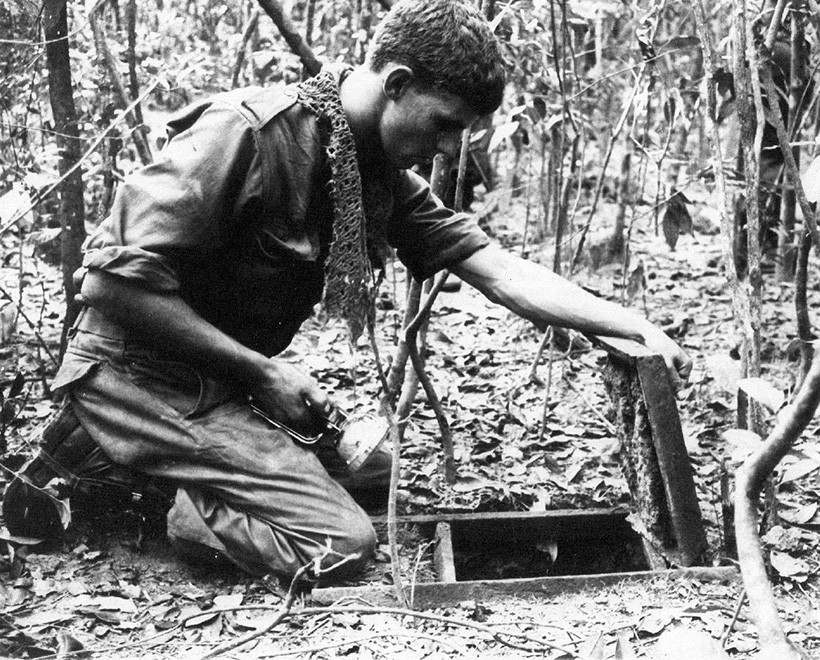
VIETNAM – OPERATION CRIMP – JANUARY 1966
 Written by Clive Williams, MG.
Written by Clive Williams, MG.
Operation Crimp (8–14 January 1966) took place 20 clicks north of Cu Chi in Binh Duong Province. The operation targeted a VC headquarters that was believed to be concealed underground, and on our side involved two US brigades under the command of the Big Red 1 – including US 173d Airborne Brigade with 1 RAR.
Heavy fighting resulted in significant casualties on both sides, but the operation was able to uncover an extensive tunnel network covering more than 200 square kilometres.
The operation was the largest allied military action mounted during the war in South Vietnam to that point, and the first fought at division level. Despite some success, the allied force was only able to partially clear the area and it remained a key communist transit and supply base throughout the war. The tunnels were later used as a staging area for the attack on Saigon during the 1968 Tet Offensive. They were largely destroyed by heavy bombing from American B-52 bombers in 1970, ending their utility1.
As mentioned, this operation started for us on 8 January immediately following on from Operation Marauder. As ARVN was not forewarned about the operation, this time we had surprise on our side. We did not really know what to expect from the enemy. US intelligence reports would always tell us that there was an enemy brigade or division in the target area, and the location of extensive food caches etc. The information was provided in great quantities before an operation but usually proved to be incorrect, so after a while we would mark up our maps with what seemed credible and ignore the rest. Clearly, nobody at command level believed it either, because 1 RAR was often deployed against what were notionally far superior forces in terms of numbers.
The main problem with the intelligence assessments was poor discrimination or cross-checking before human intelligence (humint) was added to the US data base. As they say – “garbage in, garbage out”.
On this occasion, we were told that there were heavy enemy concentrations in the area and for once the intelligence proved to be correct. On 8 January 1966, as we approached a wooded area, heavy firing broke out directed at Jim “Bindy” Bourke’s 12 Platoon from D Company. There were soon calls of “medic” and my attached medic, Private Chris Clark, ran forward to assist. That was the last time I saw him alive.
Bindy came back through our area with his face streaming with blood. He had been shot in the face at close range. It turned out that the area was riddled with tunnels and his platoon had come under fire from VC bunkers. Both Bindy’s medic and mine – Chris, from Derbyshire in England – were shot from bunkers and killed. Chris was aged 20. By the time my platoon was sent forward, the enemy had withdrawn.
One of the tunnel entrances buried beneath loose earth and dead vegetation. (Unknown photographer)
There were clearly lots of tunnels in the area from the amount of spoil, which was about a metre deep, but we had trouble finding the entrances. A highly trained Labrador sniffer dog was brought forward but he sat down and yawned and feigned complete disinterest. Just then Z noticed a loop of wire that was nearly buried. It turned out to be one of many entrances to an enormous tunnel system.
Because we did not have pistols at platoon level, we were obliged to search tunnel systems armed only with bayonets – the tunnels were too restricted in diameter to allow for anything larger than a bayonet or a pistol to be taken into them.
 Major John Healy and WO2 Jack Cramp with some of the weapons we recovered, including a 57mm recoilless rifle. (Photo Clive Williams)
Major John Healy and WO2 Jack Cramp with some of the weapons we recovered, including a 57mm recoilless rifle. (Photo Clive Williams)
3 Platoon recovered about 60 weapons from one cache in an underground bunker, mostly French. Some were “as new” and still in their original wrappings. I asked if we could retain some as souvenirs. We were told we could have one each and we were issued with tags so that we could put our names on them. This we did, and they were taken out on helicopters. None of them arrived back at our lines. All were souvenired by American helicopter crews.
We spent several days searching through the tunnels. My best tunnel rat was my ace scrounger, Private Don Aylett, who was tall and thin. He found several homemade .22 pistols but he sold them to others before I learned about them. (Having said that, the picture I took of him (below) actually shows him holding one!) Later, after discovering the theft of our French weapons, I was less annoyed with him.
I felt that I could not send my platoon members down tunnels without going down one myself. I regretted it as soon as I disappeared from their sight. There was just enough room to bend down to access the beginning of the horizontal shaft, about two metres down. Initially I was on my knees and elbows, but the tunnel was soon only large enough for me to wriggle on my stomach with my arms fully stretched ahead of me with a torch in one hand and a borrowed pistol in the other. I estimate the tunnel could have been no more than 30 centimetres high and 35 wide. I was quite thin, being just over 6 feet (1.85 metres) tall and weighing ten stone (63.5 kilograms) at the time. Even so, I had only gone about 10 metres before I got stuck because the tunnel narrowed. The tunnel was just bare sandy earth with nothing to support the roof. The air in the tunnel was thick and hot and humid, and I started to feel dizzy. I tried reversing but there was no going back. I started to panic. I lay there for some time regretting my decision and thinking that this was a hell of a way to end one’s young life. It was clear to me that nobody was going to know where to dig for me and that if I was going to get out, it was only going to be as a result of my own efforts. I decided that the only thing I could do was to try to go forward. After all, a Vietnamese must have been able to do it. However, I knew that if there was a tunnel collapse ahead, I was done for.
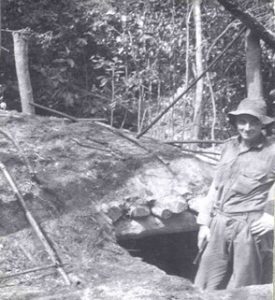 Don Aylett at one of the VC bunkers – and holding one of the homemade pistols. (Photo Clive Williams)
Don Aylett at one of the VC bunkers – and holding one of the homemade pistols. (Photo Clive Williams)
For the next half an hour or so, I inched gradually forward using my toes to push myself, not sure whether I was getting myself more and more firmly wedged. Eventually though, the tunnel seemed to be slightly wider ahead and I found that I could move a little more freely. After what seemed like a long while I reached a vertical shaft and was able to get to my feet and push up the tunnel cover. I was very shaken by the experience. It was the longest hour of my life, and it still brings me out in a cold sweat to think about it. It also gave me the greatest respect for the Viet Cong who had dug the tunnels and lived and died in them.
The next day an Australian sapper suffocated in a nearby tunnel when smoke came through from tunnels the Americans were searching. Most Americans were too big to get down the tunnels and one of their units had thrown smoke grenades down them instead. Eventually the Americans brought in heavy air blowing equipment and pumped CS gas (tear gas) down the tunnels. We were told that the area was to be bombed by B-52s to collapse the tunnels and make them unusable, but when we flew over the area several months later there were no obvious signs of aerial bomb damage. Some greatly enlarged tunnels are now the famous Cu Chi tunnels, a must-see for tourists.
There is a contentious post-Vietnam side issue between Australian Army infantry and engineer veterans regarding the searching of the Cu Chi tunnels, with sapper lobbyists playing down 1 RAR’s tunnel-searching that went on for at least a day before 3 Field Troop of the Royal Australian Engineers (RAE) appeared in our company area. For example, this is a narrative by Carey McQuillan on the 173d Airborne website: “It took 1st RAR a number of days to take and secure the position, during which time 1st RAR was subjected to intermittent sniper fire from within our own perimeter. Subsequently, some tunnel entrances were located and members of 3 Field Troop entered the tunnels with a torch in one hand and a 9mm pistol in the other and in so doing became the first TUNNEL RATS to enter what was to become known by US forces as, THE TUNNELS OF CU CHI.” The Australian War Memorial has adopted the engineer version of events – what might now be termed “fake history”!
I did personally benefit from this operation in a small way by acquiring a VC commander’s hammock. I did not use it in Vietnam because it was not a good idea to be off the ground at night on operations because you were more likely to be hit by incoming rounds or shrapnel, but I made good use of it on military exercises back in Australia and when I was attached to the British 3 Para as the intelligence officer.
We returned to Bien Hoa on 14 January 1966.

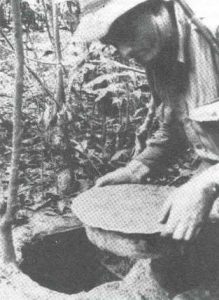
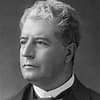

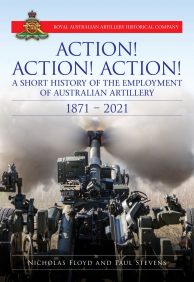
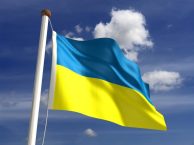
Crimp was the costliest in terms of casualties during the 12 months we spent in Vietnam, Eight killed and thirty one wounded in battle. I remember Phil Thompson emerging from the tunnels through a pop-up hatch right in front of our M60 and Gizza White was ready to fire when the head turned and he was looking at his brother-in-law. Phil could have been mistaken for a VC with his black hair and olive skin.
Pete Lindwall
7Pl